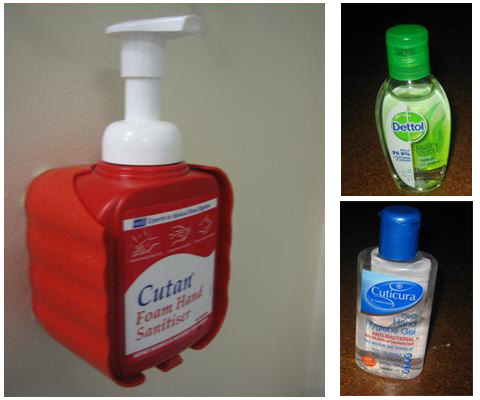Alcohol Gel
Alcohol handwashing products come in several forms:
- Alcohol gel
- Alcohol foam
- Alcohol liquid for use as a spray
They contain:
- 60-80% alcohol. Note that >80% alcohol is less potent as some water is needed to denature proteins in micro-organisms
- Some contain moisturisers and perfumes
Select each link to learn more.
- Technique
- Advantages and disadvantages
- How to make an alcohol-based solution for a hand rub

Technique
Use on hands that are physically clean.
Use on dry hands only.
Use 3 doses for each application. At least 3 ml of alcohol gel should be used to be effective though this probably varies between manufacturers.
This should be enough to rub hands thoroughly for 15 seconds.
Continue rubbing the solution over the hands until they are dry (15–30 seconds)
Advantages and disadvantages
Advantages:
- Convenient, fast and doesn’t require other resources
- Reduces bacterial and viral counts on the hands to a greater degree than soap - 30 seconds after application, most bacteria are killed (99.9%) along with most viruses and some fungi
Disadvantages:
- Not effective on hands that are visibly dirty
- Alcohol gel does not kill Clostridium bacteria, which is responsible for some diarrhoea in hospital patients
- Flammable (ok once evaporated) – keep away from flame
- More expensive than soap and water (but can be produced locally)
- Stings on broken skin
Making an alcohol-based solution for hand rub
The ingredients of an alcohol-based solution are:
- Alcohol (either ethanol, isopropanol or n-propanol)
- Hydrogen peroxide
- Glycerol
- Water (boiled and cooled or distilled)
For proportions, see page 49 of WHO Guidelines on Hand Hygiene in Health Care: First Global Patient Safety Challenge Clean Care is Safer Care. This document can be accessed in the Links section of the Resources page.